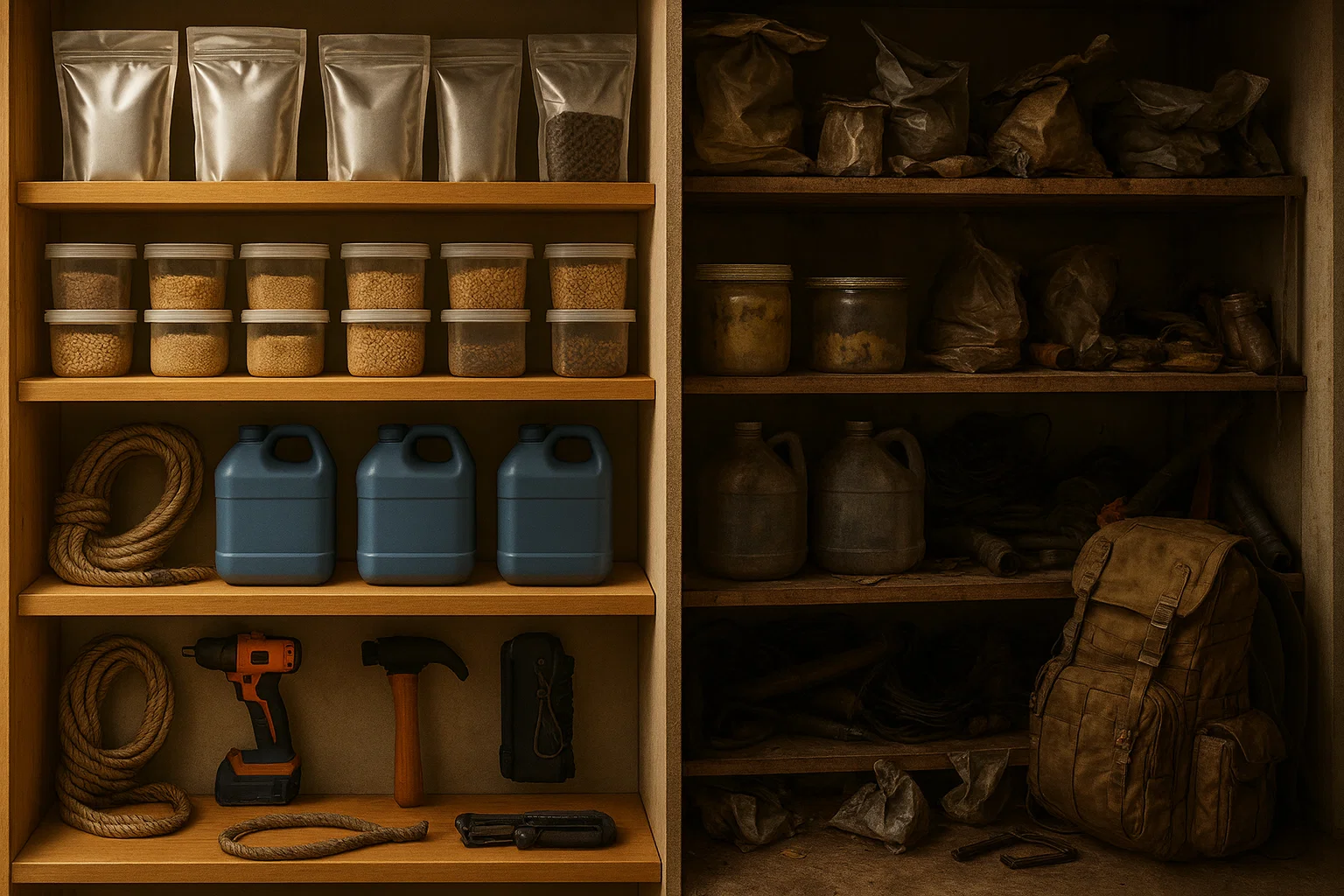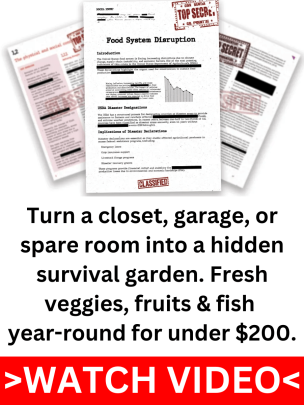Survival frequently depends on your knowledge and readiness to respond when the unexpected occurs. For many Americans, being able to survive a catastrophe is about defending themselves and their loved ones in times of need, not just about having fun. The fact is, you don’t get a heads-up from emergencies. The capacity to remain composed and rely on practical abilities can be the difference between life and death in natural disasters, power outages, or getting lost in the wilderness.
The good news? You don’t need costly equipment or months of instruction to begin developing these vital skills. You may spend just one weekend learning some of the best fundamental survival skills. It’s about taking the initial step toward independence, not becoming an expert overnight. And let’s be honest, knowing you can survive independently if necessary is incredibly fulfilling.
Fire Starting Techniques
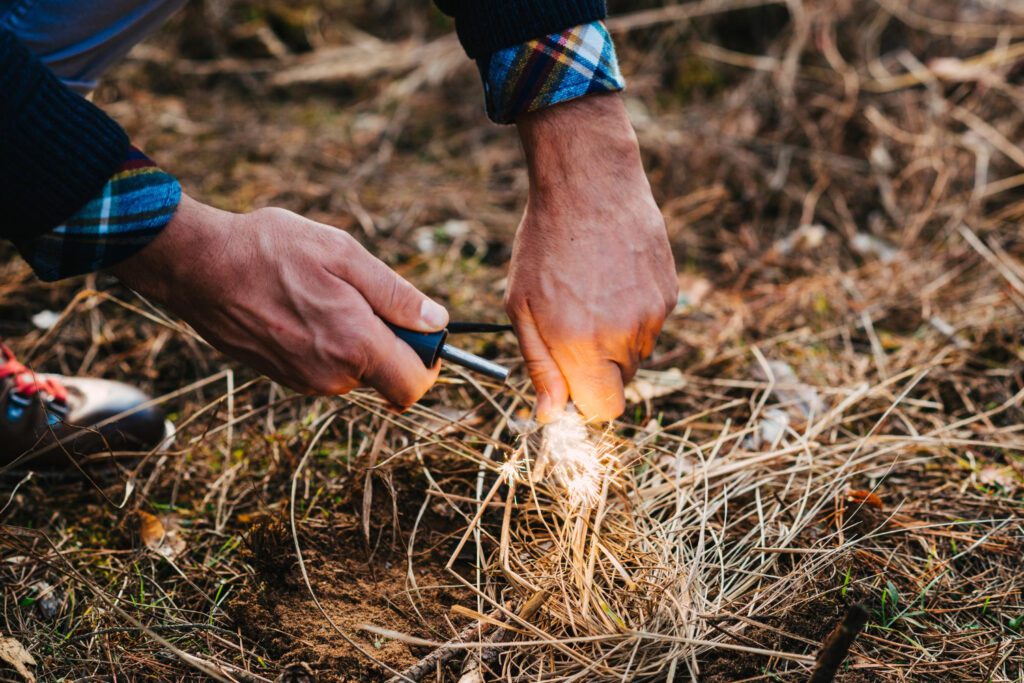
Using fire is essential for survival because it satisfies three basic needs: signaling, cooking, and warming. Fire offers more than physical warmth in a survival situation; it also provides solace, a feeling of safety, and the capacity to turn uncooked materials into food. It can repel dangerous animals, dry out damp clothes, and serve as a beacon for rescue crews in emergencies. Food may remain hazardous to consume without fire, hypothermia may develop on chilly nights, and the darkness becomes physically and mentally taxing. The statement that fire can be the difference between life and death in emergencies is not hyperbole.
Although numerous methods exist for starting a fire, a few stand out for their dependability and simplicity. The tried-and-true combination of flint and steel produces sparks when the steel hits the flint, which is one of the most widely used techniques. It is reusable, portable, and, with experience, very effective. The bow drill provides an intriguing way to create fire via friction for individuals who wish to go deeper into conventional techniques. This simple tool, which requires patience and careful synchronization, comprises a bow, spindle, hearth board, and socket. Gaining proficiency in the bow drill will connect you to the origins of human creativity, even though it can take multiple. However, contemporary alternatives such as butane lighters, magnesium fire starters, and waterproof matches are practical and necessary for your survival pack. These gadgets are great backups when time is of the essence since they can swiftly ignite a flame, even in difficult situations. The best thing about all these techniques is that you may practice them without traveling far. You can practice in a safe setting on your lawn or even at a nearby campsite.
Naturally, understanding how to ignite a spark is only the first step. To construct a dependable fire, you must comprehend the function of tinder, kindling, and fuel. Tinder is the base since it is highly combustible and captures the first spark or flame. Natural alternatives include dry grass, pine needles, birch bark, and even moss. Packing cotton balls soaked in petroleum jelly, which ignites readily and burns for several minutes, is something to consider if you plan. The following step is kindling, which comprises tiny twigs, broken branches, or wood shavings that strengthen the tinder’s flame. Lastly, you’ll need bigger fuel logs to keep the fire going over time. The secret is to put everything together before you light your first spark, organizing your materials in structures like log cabins or teepees to promote efficient burning and ventilation.
After you’ve learned the fundamentals, it’s time to push yourself by practicing in various climates. The most straightforward situation is a beautiful, calm day, but what happens when it rains, or the wind howls? Creativity is needed in wet conditions, such as collecting dry tinder inside tree hollows or behind logs. Constructing a fire pit or using rocks as a windbreak on windy days may be necessary. You’ll be more equipped to handle real-world circumstances the more you put yourself through these obstacles. Repetition breeds confidence, and building a fire is no different. What once seemed like an impossible effort will become second nature with enough repetition, making it a fundamental survival skill you can depend on in high-stakes situations.
Water Sourcing and Purification
Life depends on water, and having access to safe, drinkable water during an emergency might be crucial. Although your body may survive for weeks without meals, dehydration can be fatal in a few days. Without water, your body finds it difficult to maintain energy levels, control body temperature, and eliminate pollutants, which can cause exhaustion, confusion, and organ failure. Because of this, one of the most crucial survival skills you can acquire is finding and cleaning water. An otherwise grave situation can be tolerable by knowing where to find water and how to make it safe.
A sharp eye and ingenuity are needed to locate natural water sources. Your greatest bet is flowing water from creeks, rivers, or streams since the movement naturally inhibits algae growth and germs. However, other sources can be helpful in situations where running water is not available. Small but essential amounts of hydration can be obtained from dew collected from grass or leaves in the morning. Another great resource is rainwater, which you can collect using a bucket, tarp, or other container. Small amounts of water can occasionally be found in tree bark, especially from birch or maple trees, and mossy patches may collect runoff and naturally occurring rock formations. You can often find water in unexpected locations by paying attention to your surroundings and using your imagination.
No matter how clean it looks, purifying water is a must. Boiling is the easiest and most efficient way to eradicate parasites, viruses, and bacteria. Bring water to a rolling boil for at least one or three minutes at a higher altitude. A do-it-yourself filter can be a lifeline if boiling is not a possibility. Make one by filling a bottle or hollowed-out log with pebbles, sand, and charcoal. This technique eliminates silt and debris but does not eradicate dangerous microbes. Chemical treatments, such as chlorine drops or iodine tablets, are convenient and portable for total purification. Although they may leave a faint chemical taste, they kill most germs and viruses. Using portable water filters, like the LifeStraw or Sawyer Mini, which can immediately eliminate 99.9% of germs and protozoa, is an additional choice. When the time comes, you’ll be prepared to get clean, safe water for you and your family if you practice these methods in non-emergency scenarios.
Basic Shelter Construction
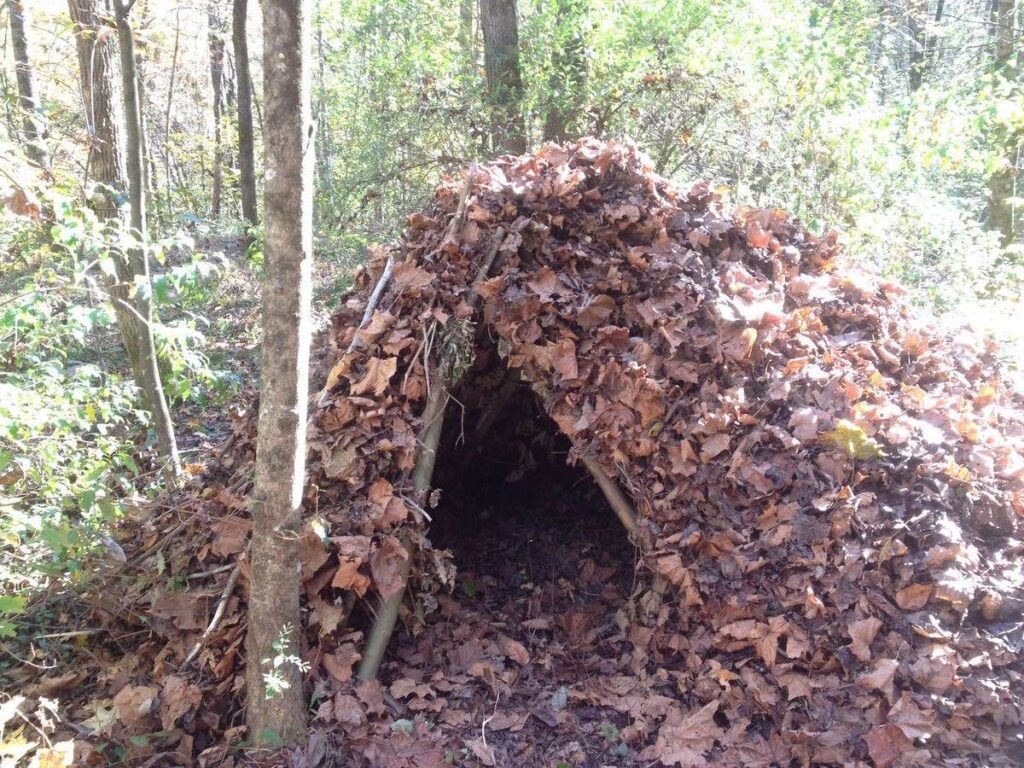
A survival necessity that is closely related to fire and water is shelter. Most individuals are unaware of how quickly exposure to the weather can cause life-threatening symptoms like heat exhaustion and hypothermia if they are not adequately protected. Extreme weather conditions, such as freezing winds, nonstop rain, or intense heat, can deplete your body’s vitality and impair your capacity for clear thought and action. More than just a roof over your head, a good shelter is a barrier between you and the outside world, preventing fatigue and regulating your body temperature. Knowing how to build a usable shelter quickly can make all the difference when you’re stuck outside without a place to go right away.
Thankfully, you don’t need a lot of tools or knowledge to build a basic shelter. For instance, a trash hut is one of the best shelters for remaining warm. To begin, locate a strong branch or stick to use as the center ridgepole and secure it between two supports, such as boulders or tree stumps. After that, cover the construction with grass, leaves, or other insulating materials and stack smaller branches against the ridgepole to form a frame. A lean-to shelter is an excellent option for windy or rainy weather. This design creates a wind and rain barrier by supporting a sturdy beam at an angle and covering it with branches or a tarp. Choosing the right location is essential for any shelter. Avoid dangers like dead trees or insect nests, pick a high, dry spot away from flood areas, and search for natural windbreaks like thick plants or rock formations. These shelters are a rapid and dependable emergency solution because they can be constructed in less than an hour with practice.
Navigation Without GPS
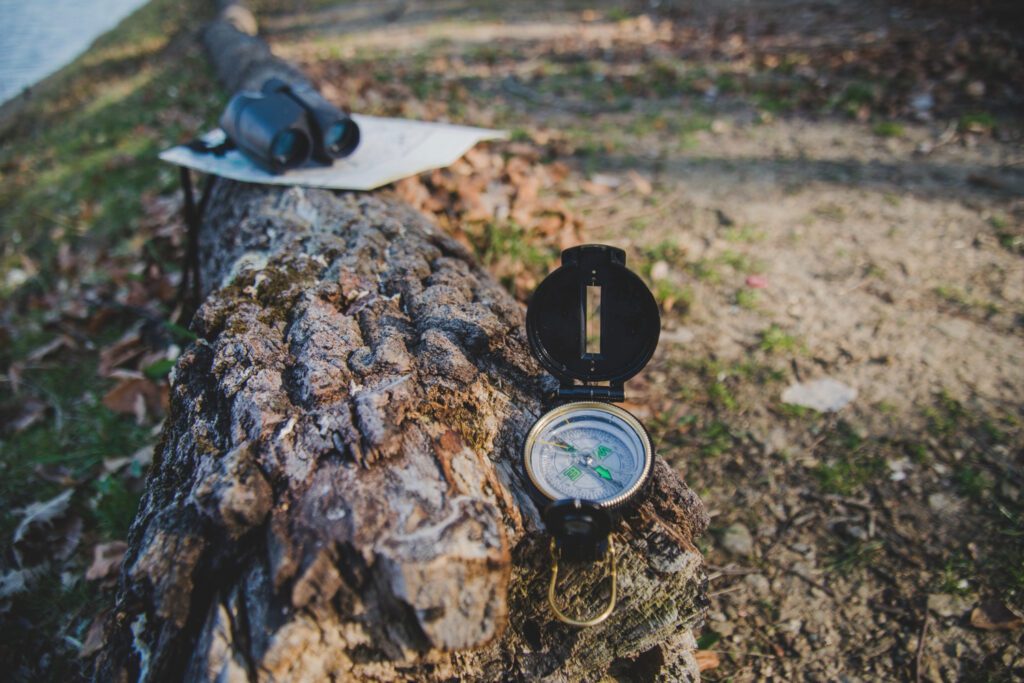
Believing that your GPS will always direct you in a technologically driven society is simple. However, what occurs if your gadget fails, loses signal, or runs out of battery? When technology malfunctions, especially in distant locations or during emergencies, relying exclusively on contemporary devices for navigation can leave you vulnerable. You can find your way if you learn to use conventional equipment like maps and compasses and develop your innate navigation skills. Reaching your goal is only one aspect of navigation; another is maintaining composure, concentration, and control under pressure.
First, every prepper should learn to read maps and use a compass. You can accurately orient a map and identify directions using a compass pointing to magnetic north. To match your map to the geography, lay it flat, align its edges with true north, and then use the compass. Learn to recognize features like rivers and roads and map symbols like contour lines that show elevation variations. You can practice creating a route map by sketching a line from your starting point to your destination and noting any significant landmarks along the way; reading a map and using a compass become instinctive with consistent practice, providing you with a dependable navigation method even without a GPS.
The natural world may be a fantastic guide if you know what to look for. Because it rises in the east, sets in the west, and moves across the southern sky in the Northern Hemisphere, the sun acts as a natural compass during the day. Because it stays constant in the northern sky while other stars seem to revolve around it, the North Star (Polaris) serves as your anchor for direction at night. Additionally, plant growth can provide hints; in the Northern Hemisphere, moss frequently develops on the shaded, usually northern side of trees. Trees often tilt slightly to the south in wide spaces to get more sunlight. Although these natural navigation techniques aren’t infallible, they enhance your abilities by adding levels of redundancy and dependability when used with more conventional instruments.
Identifying and using landmarks to orient oneself is another essential navigational skill. Features that stand out in the landscape, like big rocks, unusually shaped trees, or far-off summits, are known as landmarks. To make a mental map, make physical or mental notes of these markers as you pass through a space. For example, remember the location of a group of red pebbles or a crooked tree with your path. Look for far-off features like hills or a lone tree in a desert or open area. This practice helps you stay on course and makes it simpler to go back if necessary. You can navigate even in unknown or featureless terrain if you frequently practice this skill.
Practical experience is the most effective method for learning navigation. Start modestly by using a map and compass on a nearby hiking path or by taking a stroll in your neighborhood and attempting to locate the sun. Increase the difficulty gradually by going on longer walks or camping excursions without a GPS. Gaining confidence and recognizing errors before they become serious in a survival situation are two benefits of practicing in a controlled setting. These abilities eventually become instinctive, providing you the means to move confidently through any situation, whether in the middle of an urban crisis or deep in the woods. Every minute spent learning and practicing is worthwhile because it assures you that you can navigate without using technology.
Foraging for Edible Plants
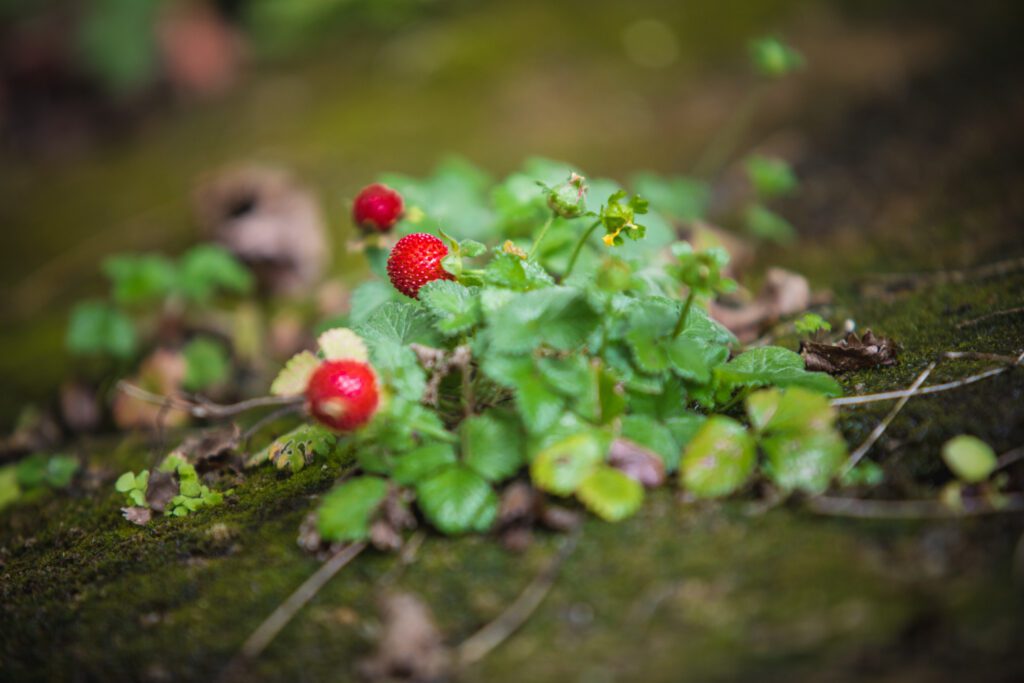
If you know where to seek, nature offers a wealth of resources when food supplies are scarce. The ability to forage for edible plants outdoors is a priceless skill that enhances your food supply and strengthens your capacity for independence in a survival situation. Whether in the middle of a protracted crisis at home or in the wilderness, knowing which plants are safe to eat and how to prepare them can make a big difference in your survival capacity. In addition to providing food, foraging helps you re-establish a connection with nature and serves as a reminder of the resources that have allowed humans to survive for many generations.
Dandelions, cattails, and wild berries are among the most readily available and nutrient-dense wild foods. For example, dandelions are remarkably adaptable; all plant parts can be eaten. While the roots can be roasted and powdered into a coffee replacement, the leaves can be eaten raw in salads or sautéed like spinach. Another survival treasure is cattails, sometimes called the “supermarket of the swamp.” They are rich in minerals and calories, and their roots, pollen, and shoots can all be eaten. In addition to being a delicious treat, wild berries like raspberries, blueberries, and blackberries are also a great source of vitamins and antioxidants. But it’s essential to identify them correctly because confusing a poisonous fruit for an edible one can be fatal.
The most crucial foraging rule is safety. There are countless edible plants in the wild, but there are also many dangerous ones, some of which can cause severe illness or worse. The best action is cross-referencing your findings with a reliable field guide or plant identification software. Know the difference between poisonous plants and those that are edible. It’s also critical to only forage in places free of pollution, pesticides, and other pollutants. For beginners, consider taking a local foraging class or starting with plants that are easy to identify, such as dandelions or wild onions. You will have the confidence you need to forage successfully and safely when the time comes if you acquire this knowledge gradually.
Learn How to Communicate When Technology Fails
Throughout one weekend, you may become proficient in these five essential survival skills, significantly boosting your preparedness and independence when facing unexpected obstacles. Not only do they help you light fires, purify water, build shelters, navigate without a GPS, and forage for edible plants, but they also contribute to your resilience and self-assurance in times of need. Each one helps you become more prepared for emergencies, whether they occur in the wild or at home. Put some effort into learning and perfecting these abilities; you never know when they could come in handy. Make the most of your next free weekend by getting better prepared and feeling empowered by the knowledge that you are ready for anything.




